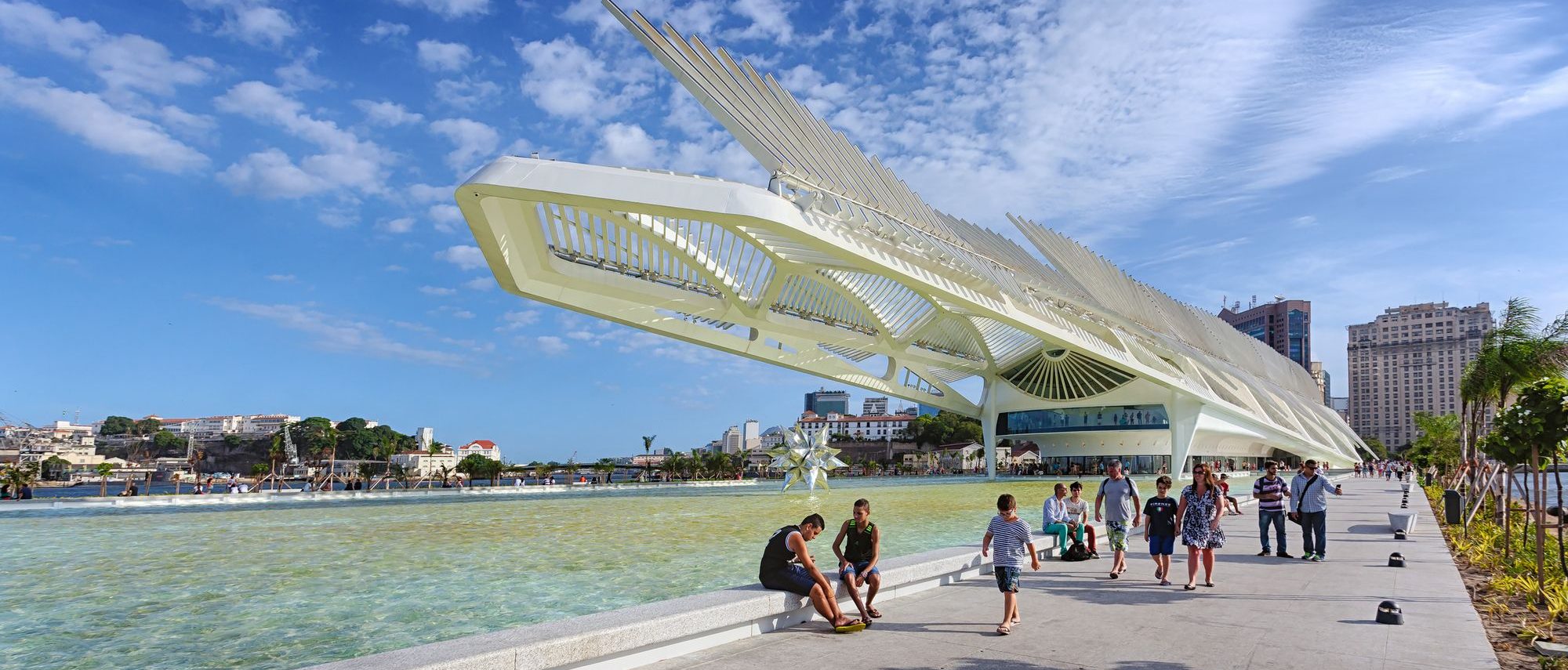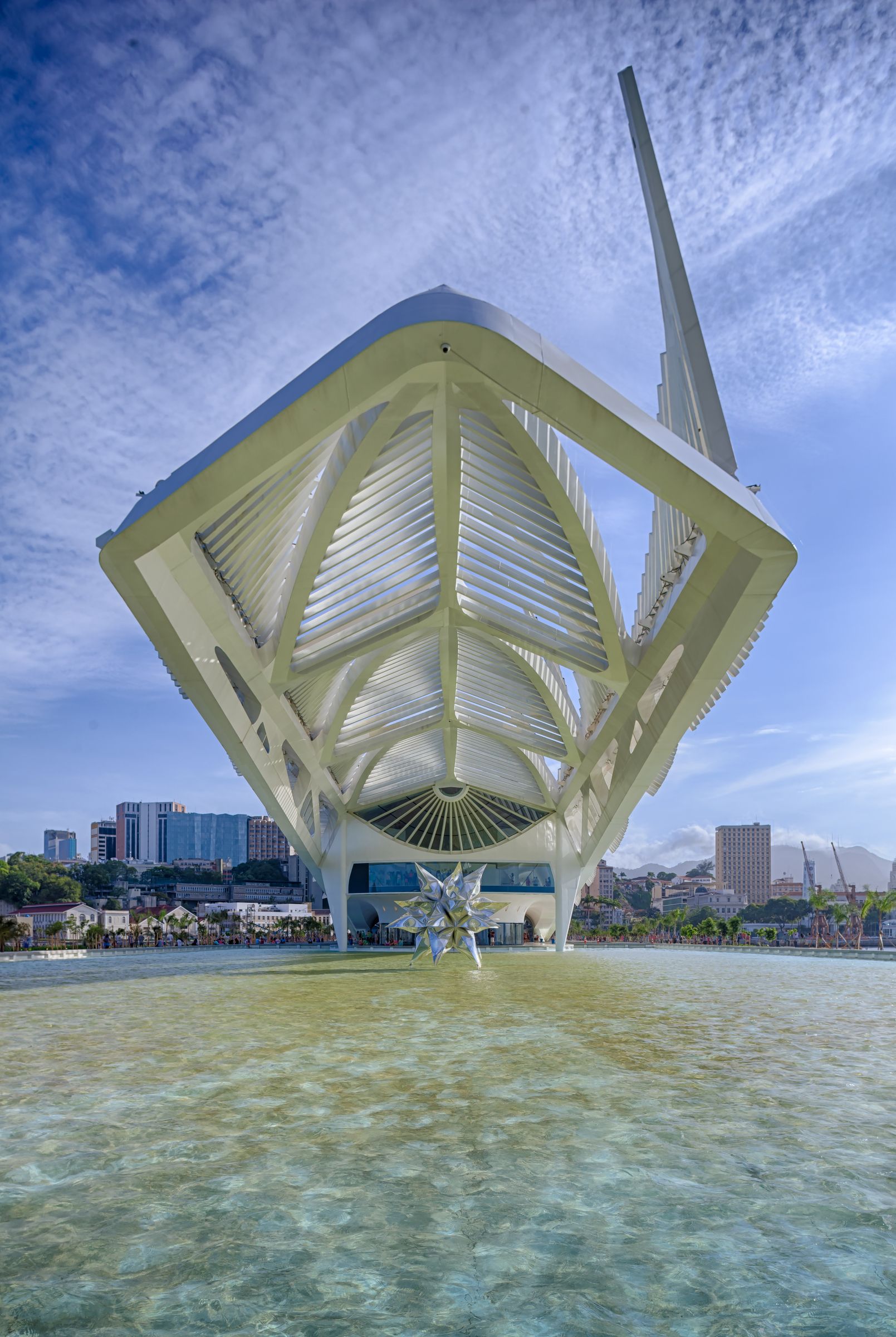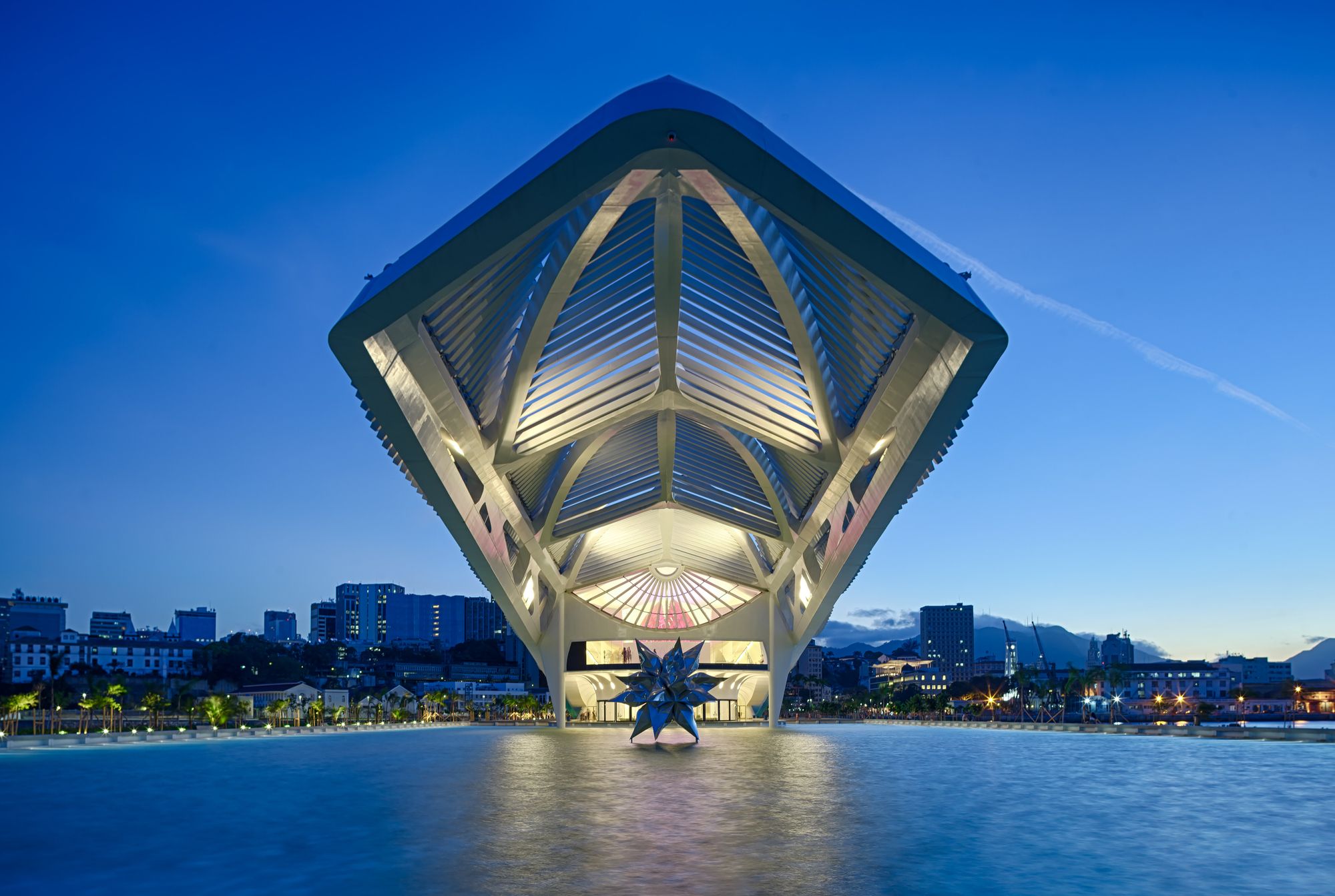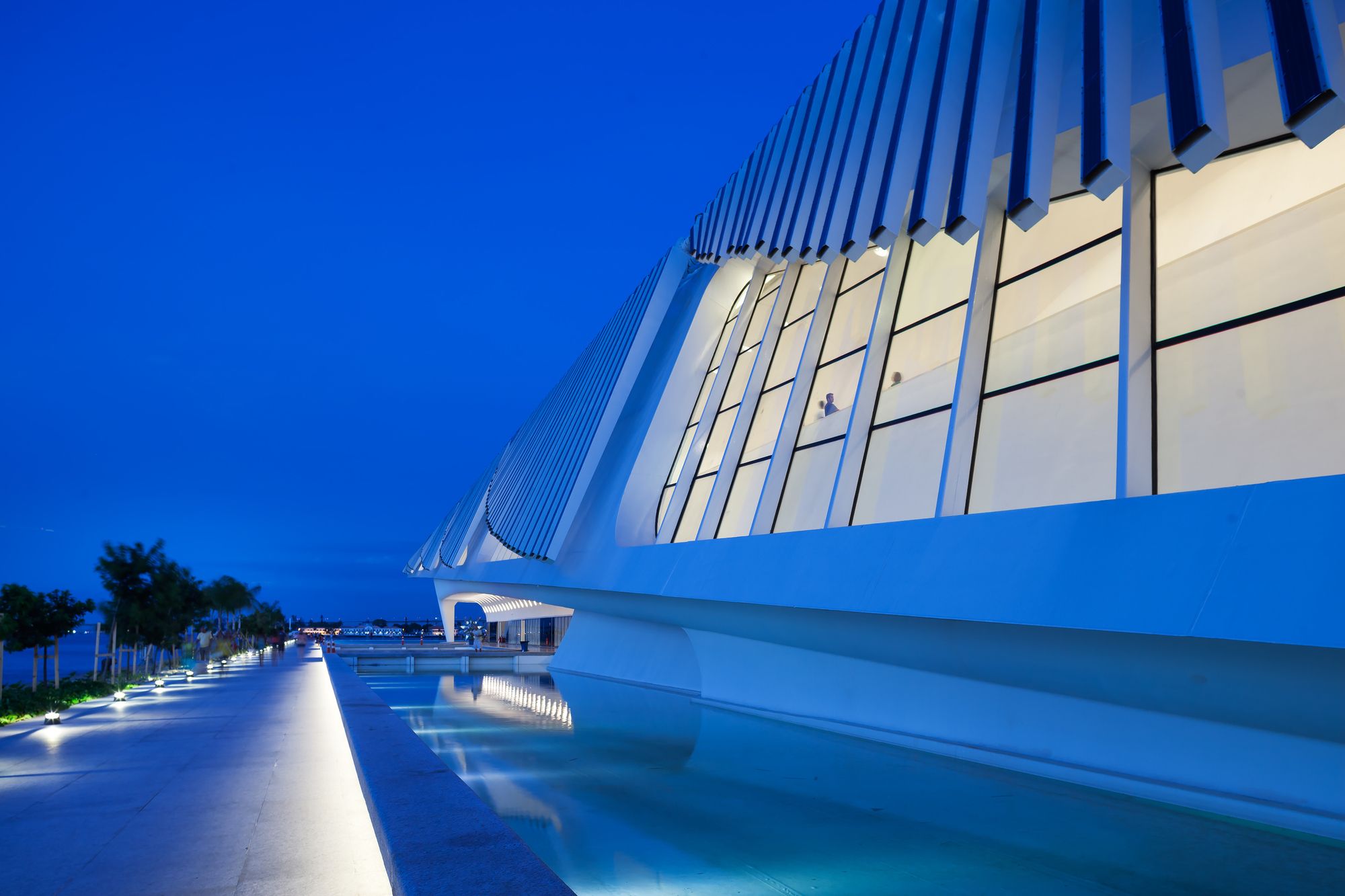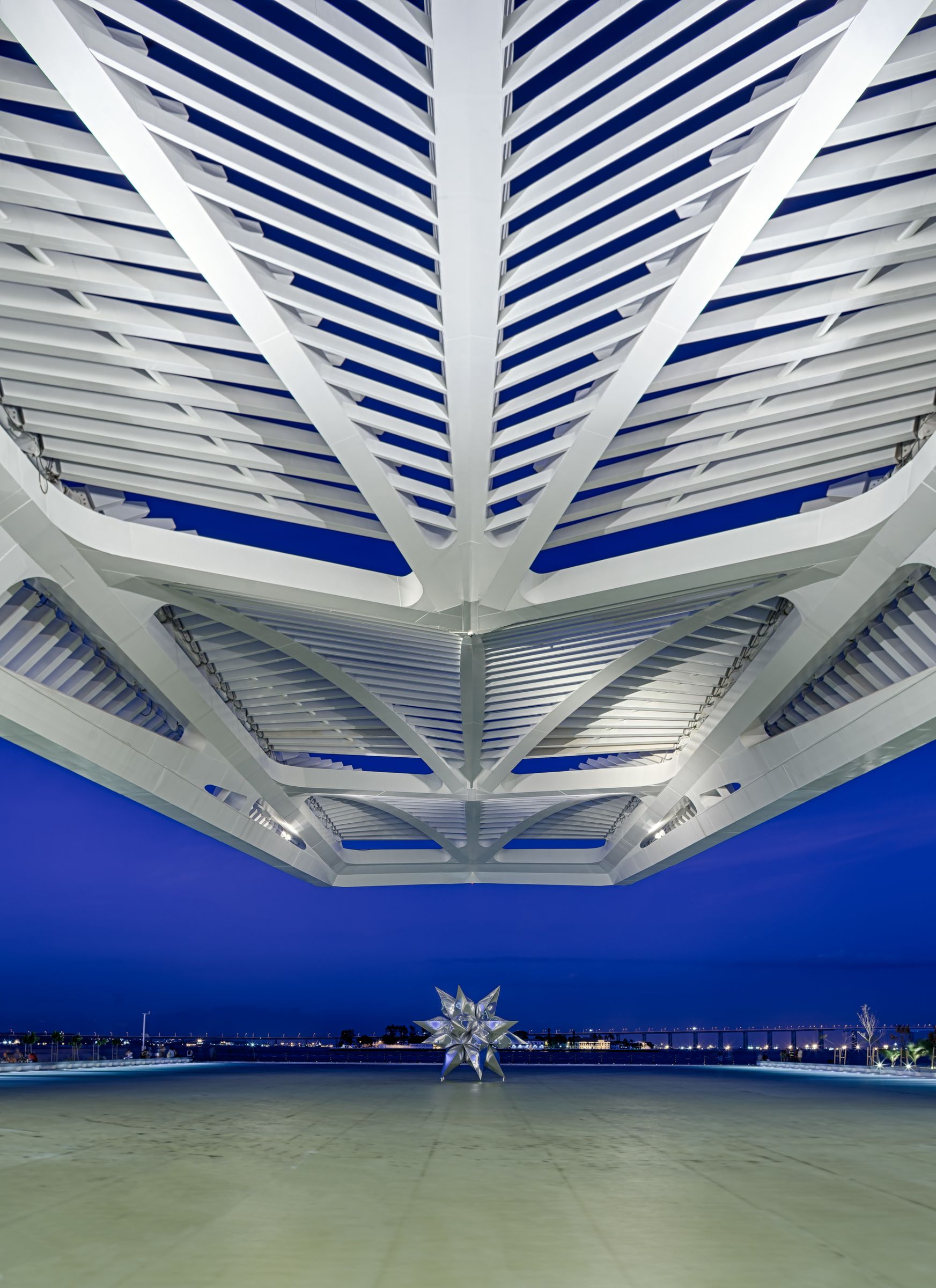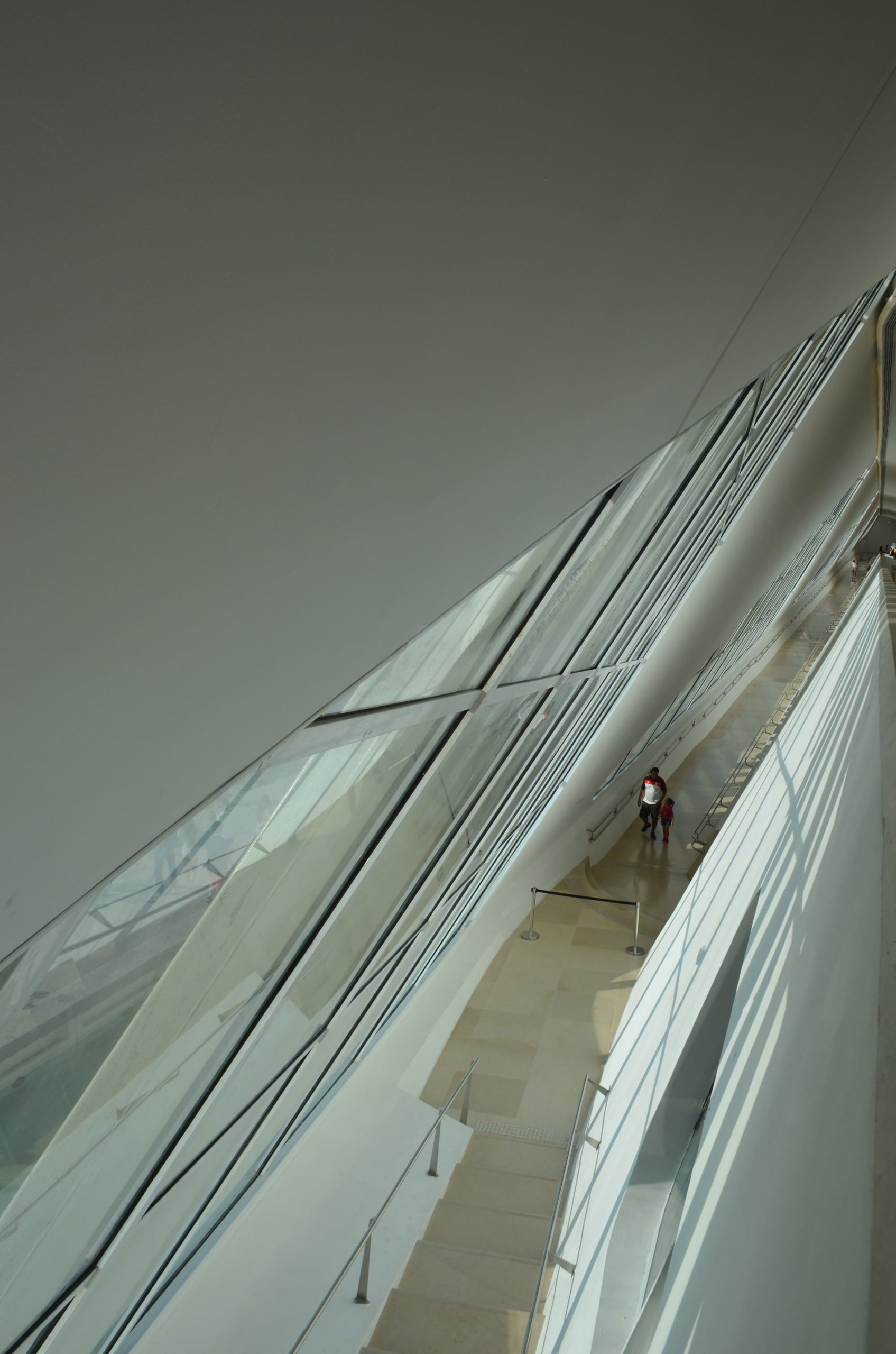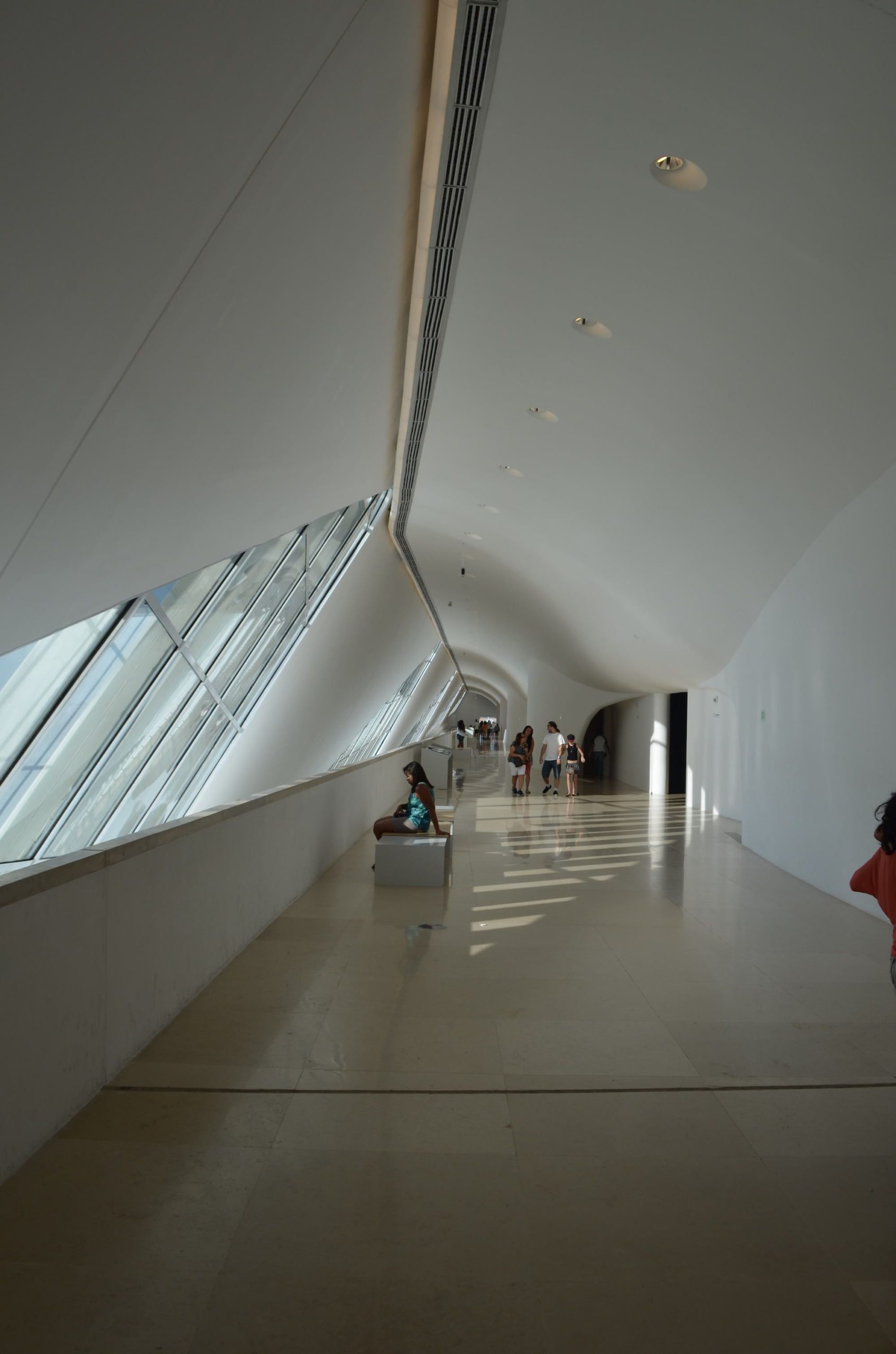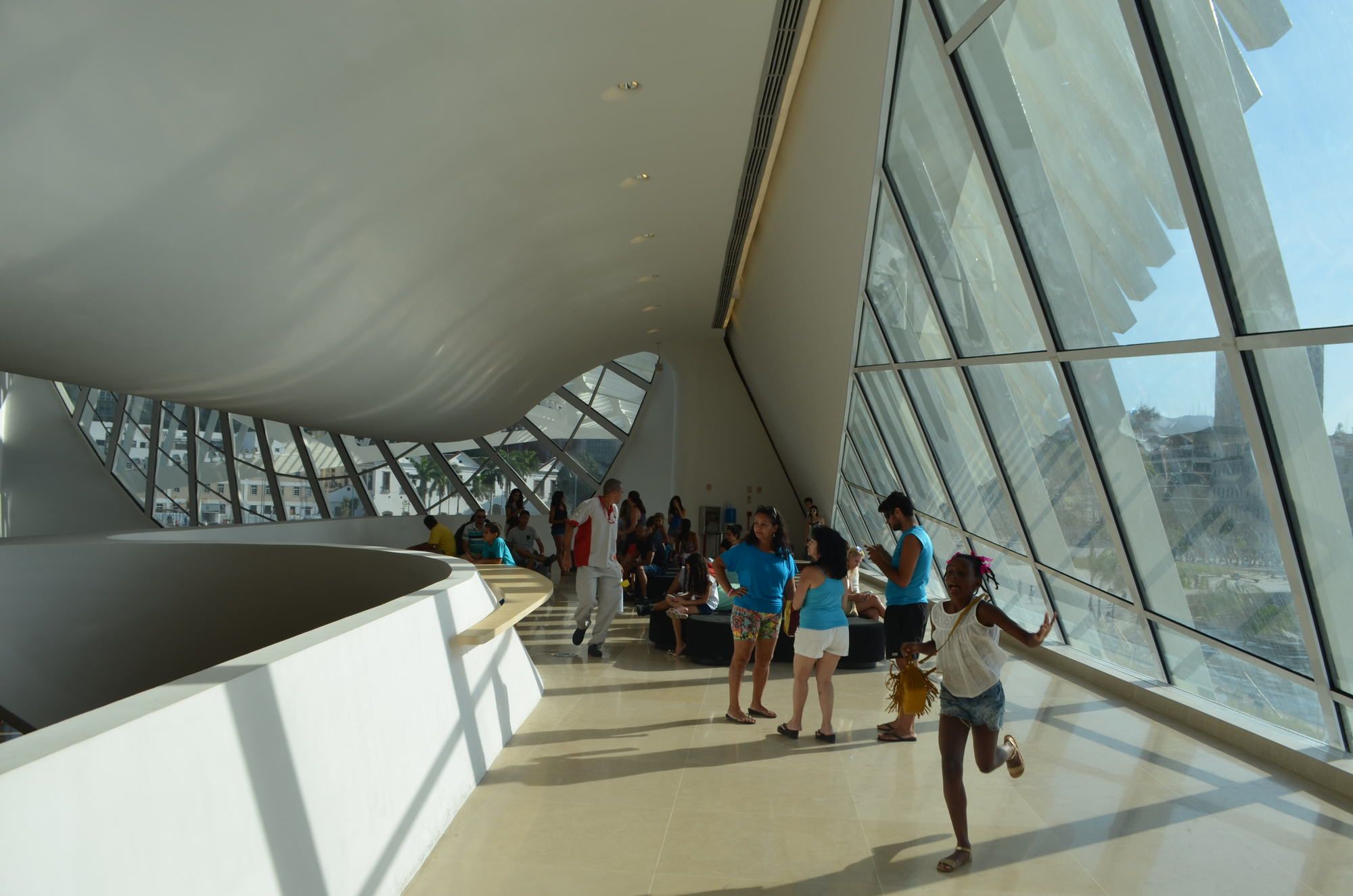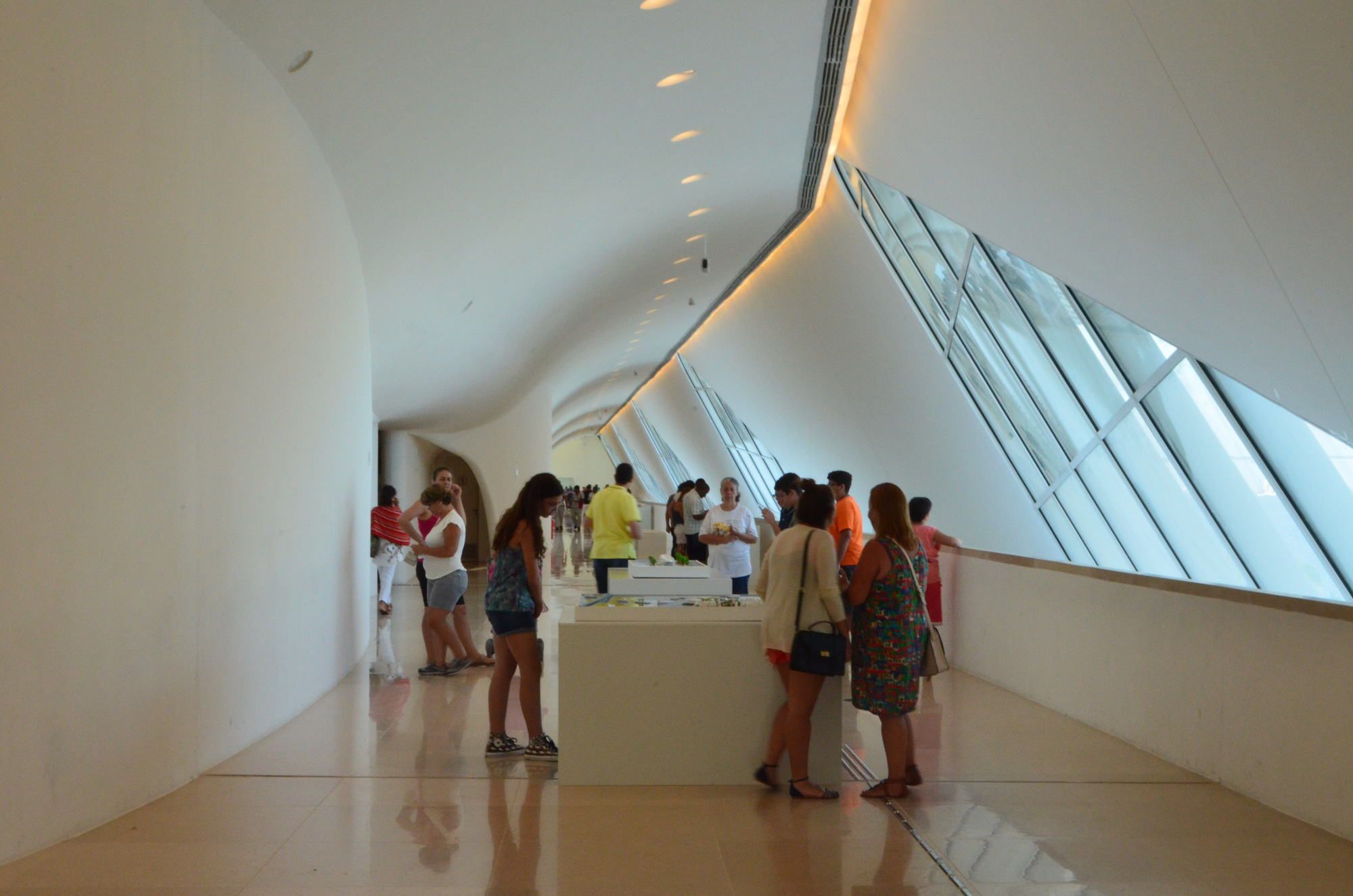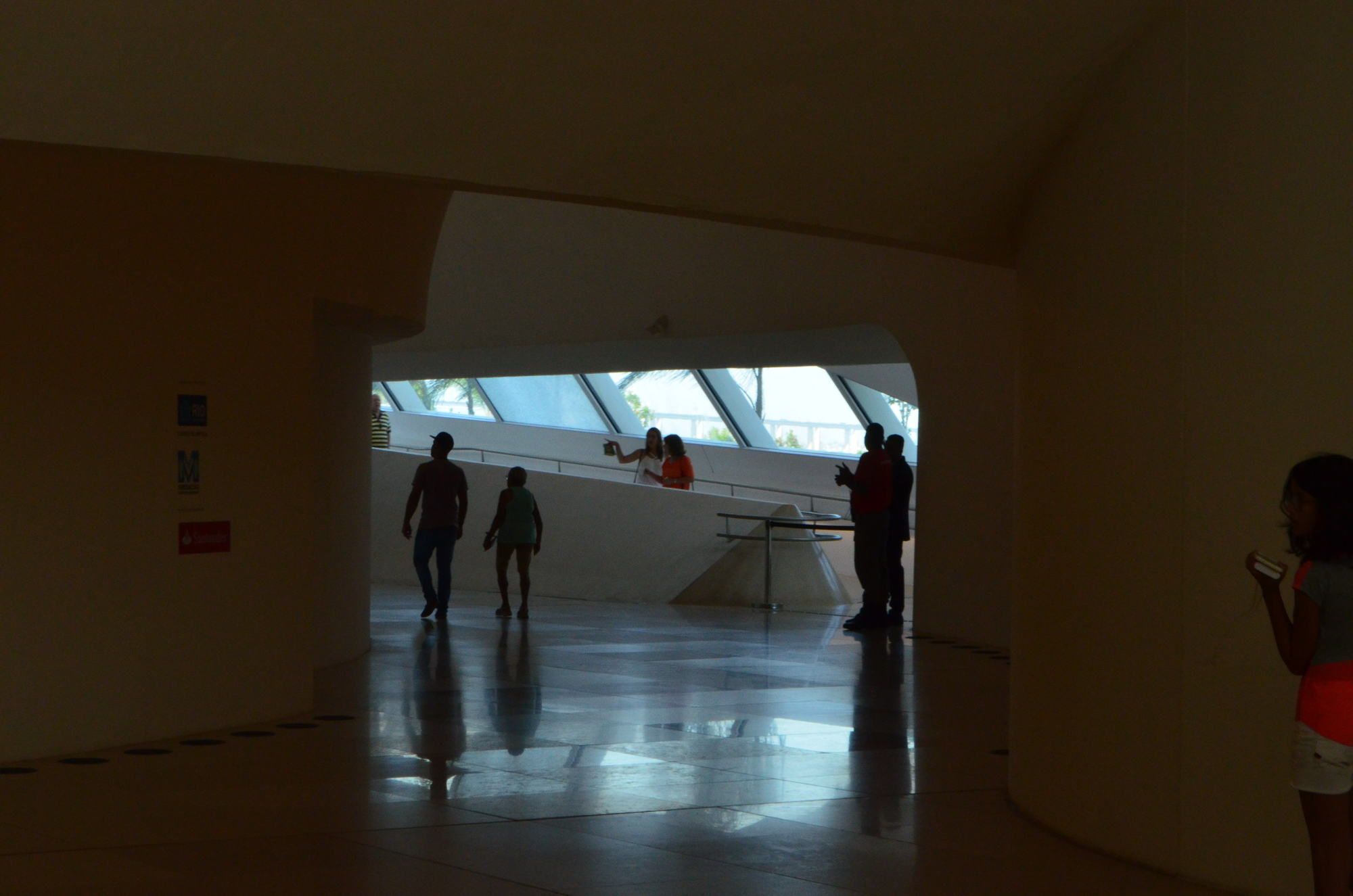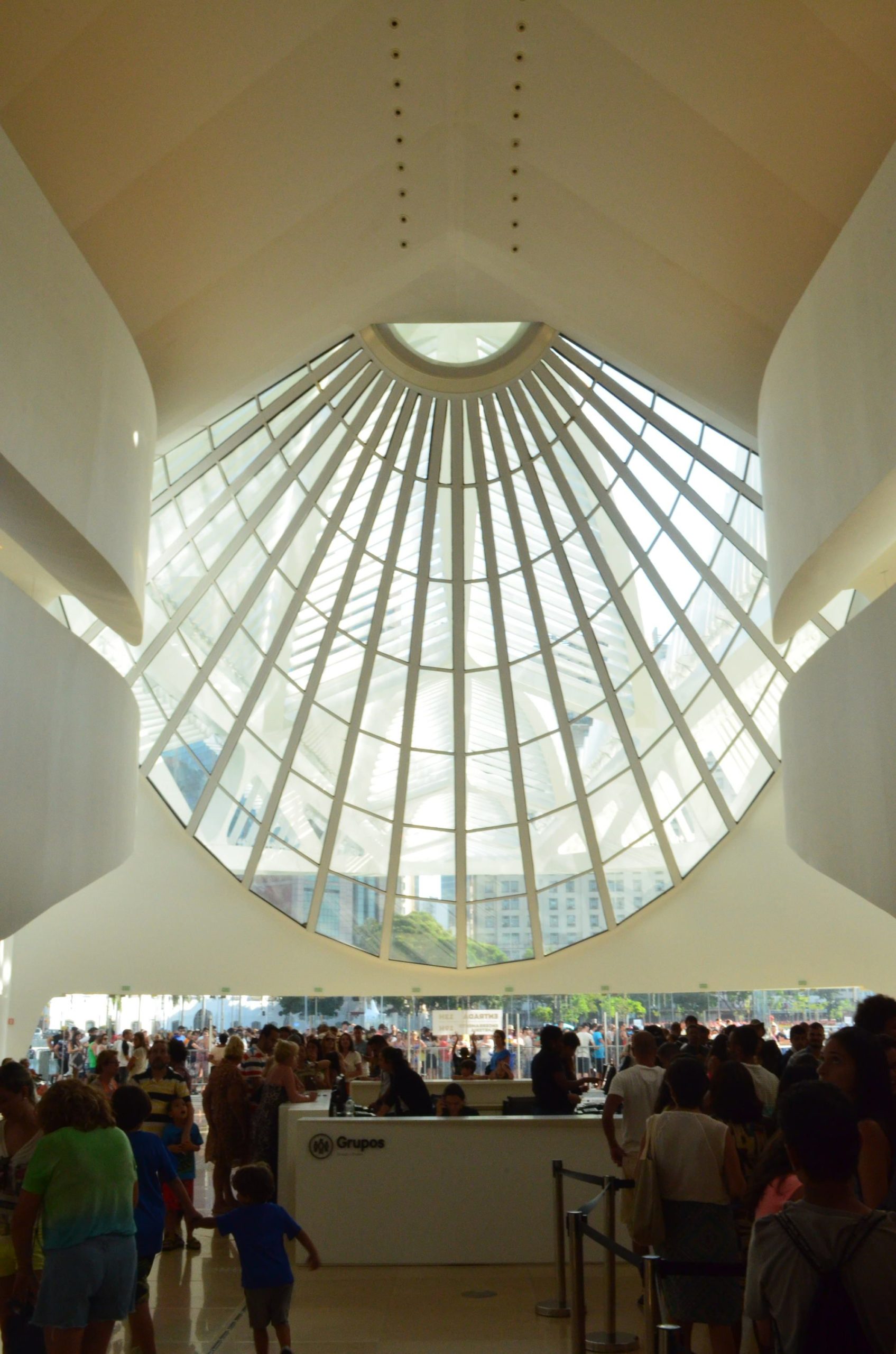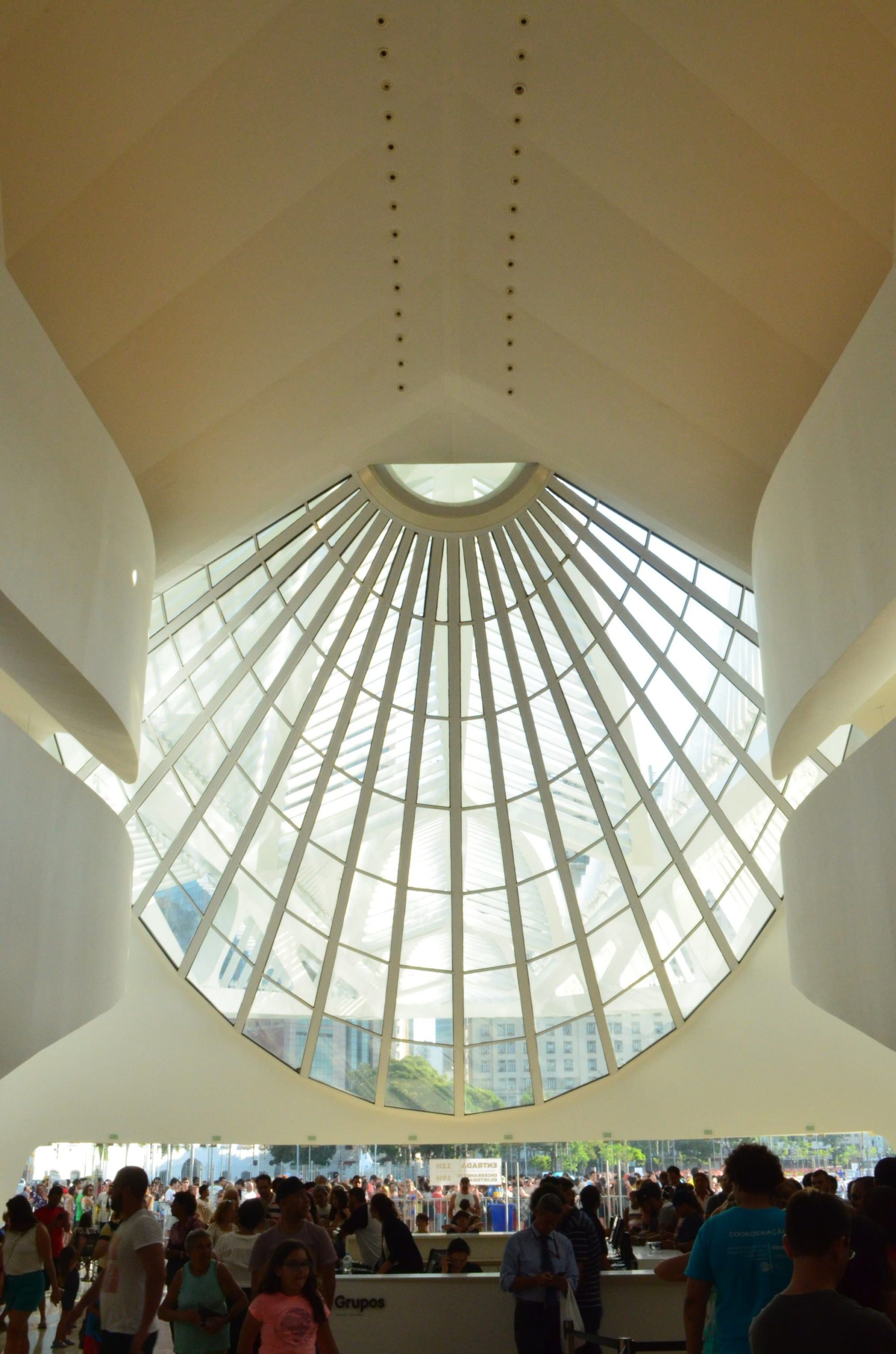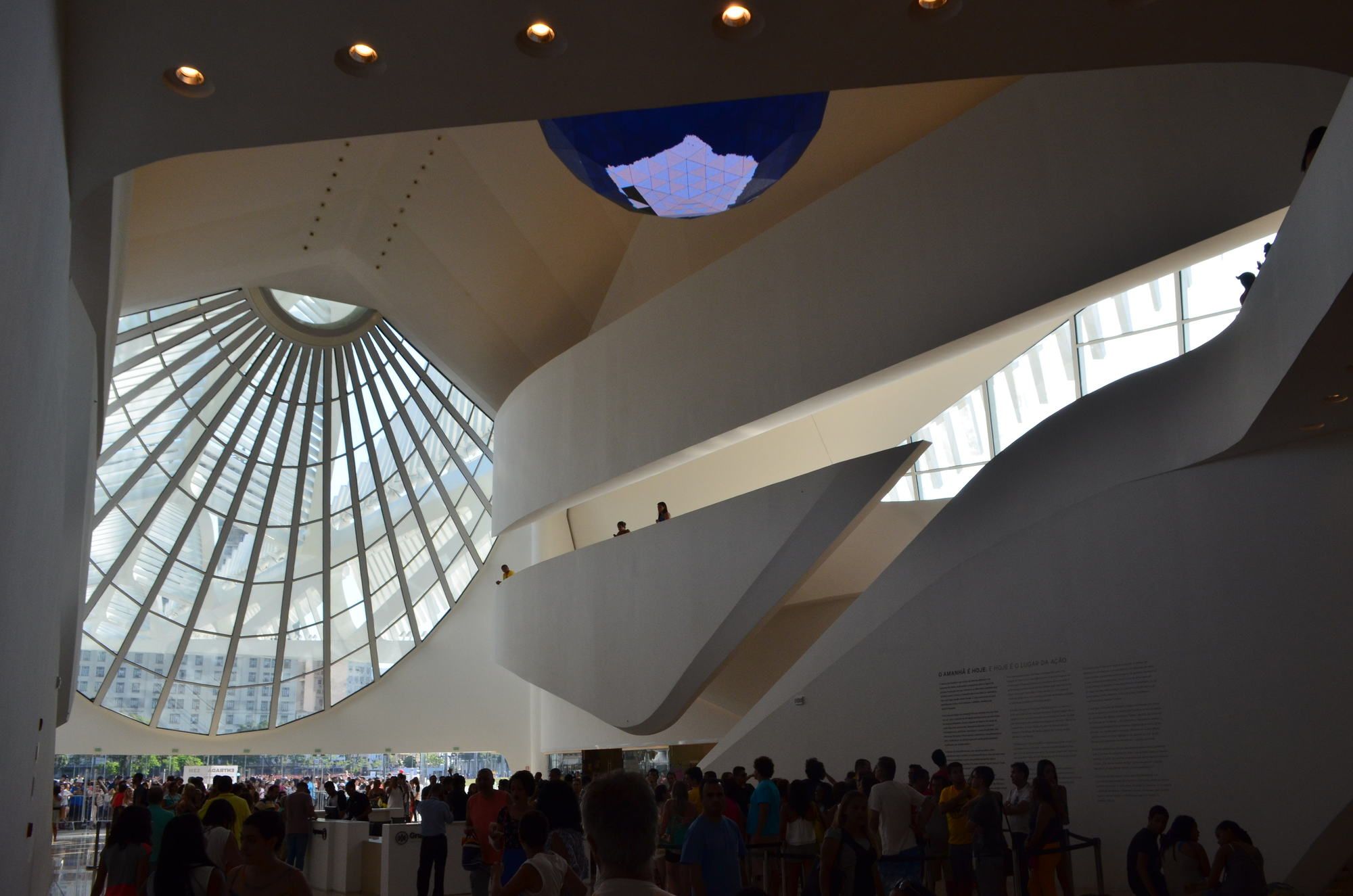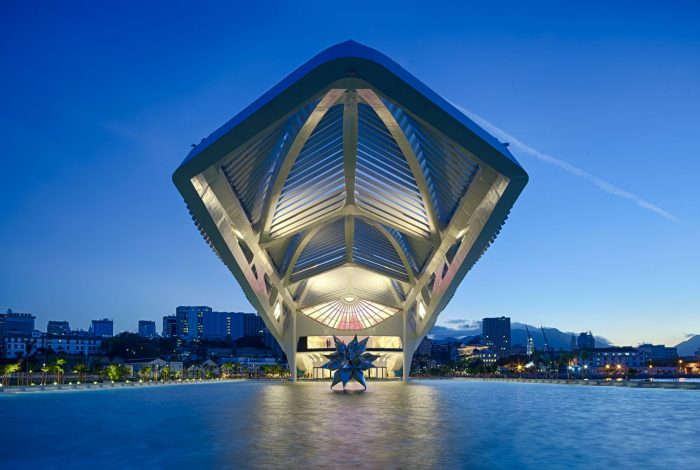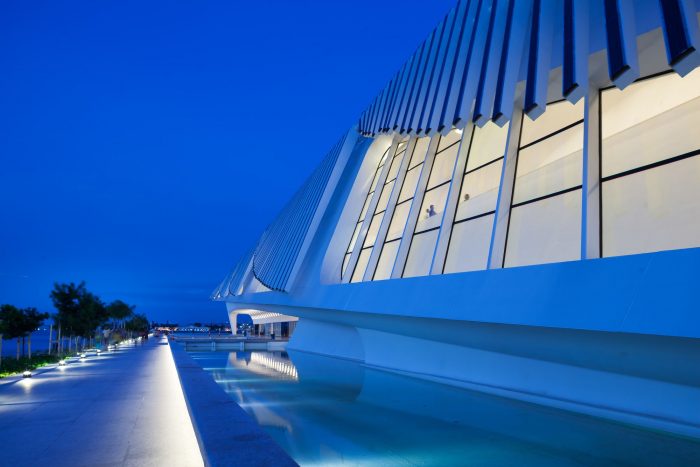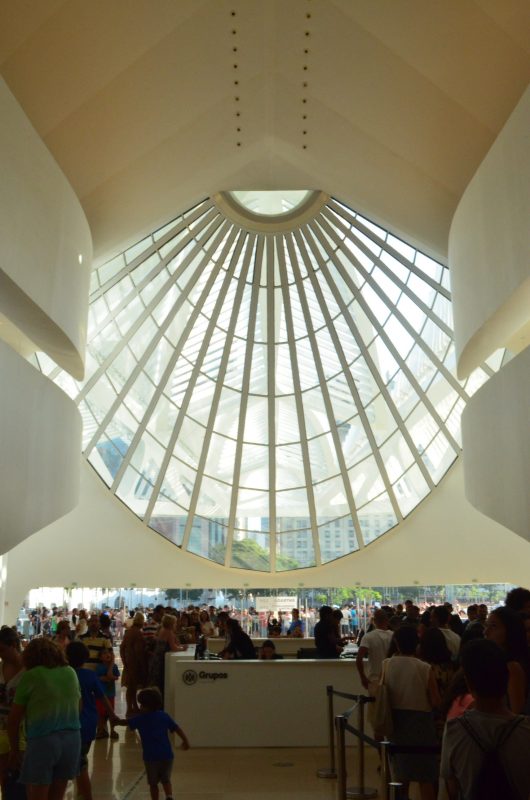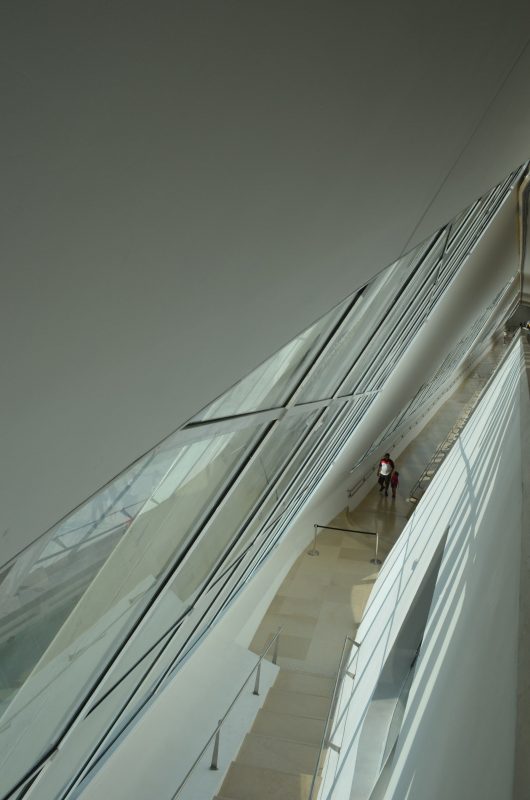The Museum of Tomorrow, Rio de Janerio, Brazil
The design of the Museum is inspired by the Carioca culture and through its architecture, explores the relationship between the city and the natural environment. The Museum includes 5,000 square meters of temporary and permanent exhibition space, as well as a 7,600 square meter plaza that wraps around the structure and extends along the dock. The building features large overhangs 75 meters in length on the side facing the square and 45 meters in length on the side facing the sea. These features highlight the extension of the Museum from the dock into the bay. The permanent exhibition is housed upstairs, and features a roof 10 meters high with panoramic views of Guanabara Bay. The total height of the building is limited to 18 meters, which protects the view from the bay of Sao Bento Monastery, a UNESCO World Heritage Site.
“The idea is that the building feels ethereal, almost floating on the sea, like a ship, a bird or a plant. Because of the changing nature of the exhibits, we have introduced an archetypal structure inside the building. This simplicity allows for the functional versatility of the Museum, able to accommodate conferences or act as a research space,” said Mr. Calatrava.
The museum an architectural edifice on its own packs an altogether different story for its existence. Sustainability has by far, in the current day context has been a debatable and quibbled over subject in any practice with each formulating his or her own theory about its generic aspects. This edifice stands as a testimony for progressive upliftment of the lost urban spaces. Considered as one of the desolate and crime ridden areas about a decade ago, this is the first step in revitalizing life into the decayed Port Maravilha neighborhood near the bay.
“The city of Rio de Janeiro is setting an example to the world of how to recover quality urban spaces through drastic intervention and the creation of cultural facilities such as the Museum of Tomorrow”– Santiago Calatrava
In addition to the copious structure, an addition of plaza creates a more cohesive urban space and reflects the neighborhood’s progressive transformation. The 18m tall museum has the trademark exposed skeletal cantilever spines the personal touch of Calatrava’s which provides an ethereal view as if the structure is floating away on water like a plant. Few other key features are, the trussed roof has solar installations that move according to the position of the sun minimizing natural energy losses, because of its horizontal tilted nature. Additionally the cooling systems tap deep waters from the Guanabara Bay. Calculation predict a reduction of 40% in energy consumption.
The 5000 sqft exhibition space has been currently adorned with various subjects revolving around the very life of a human being. As one moves through the spaces portraying origins of the planet, 13.7 billion years of geological change, the delve into the flux of matter, followed by the basic symbol of our biological existence the DNA connecting the nervous system of a series of pillars resonating the spiritual identity.
At the heart of the museum is a digital replication of Stonehenge in modern terms. 10 tall totems portray our foray into the destructive and merciless side of humankind showing the ruthlessness with which we massacred the nature for the seemingly negligible amount of 7 billions’ greed over the past century. Next exhibit jumps forward in time facilitating each visitor a chance to shape different future, through virtual media. The overall experience sounds like we experiencing a chains of thought of a much larger entity than the tiny our self. And the versatility of the museum tips it to accommodate conferences or act as a research space.
The cantilevering roof with its large mobile wings and the façade structure expand almost the full length of the pier emphasizing the extension into the Guanabara Bay, while minimizing the building’s width. A reflection pool surrounding the building on the outside—used to filter water that is being pumped from the bay and released back in from the end of the pier— gives visitors the impression that the Museum is floating.
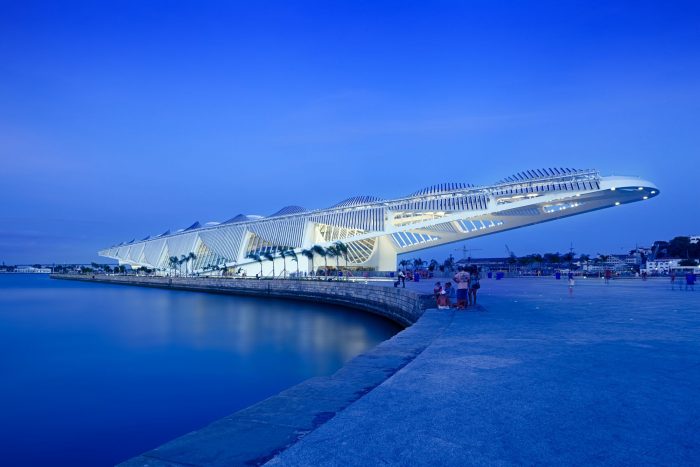
photography by © Gustavo Xavier
The building features sustainable design, incorporating natural energy and light sources. Water from the bay is used to regulate the temperature inside the building; this source also supplies water for the Museum’s surrounding reflecting pools. The Museum also uses photovoltaic solar panels, which can be adjusted to optimize the angle of the sun’s rays throughout the day and generate solar energy to supply the building.
The building is orientated in the north-south direction, off-center from the pier’s longitudinal east- west axis, maximizing a continuous landscaping feature containing beautiful gardens, paths and leisure areas along the southern length of the pier. A park walkway around the perimeter of the pier will allow visitors to circumnavigate the Museum, while enjoying panoramic views of the Sao Bento Monastery and the Guanabara Bay. The lower level contains functional and technical rooms, such as the Museum’s administrative offices, educational facilities, research space, an auditorium, a museum store, a restaurant, lobby, archives, storage and a delivery area.
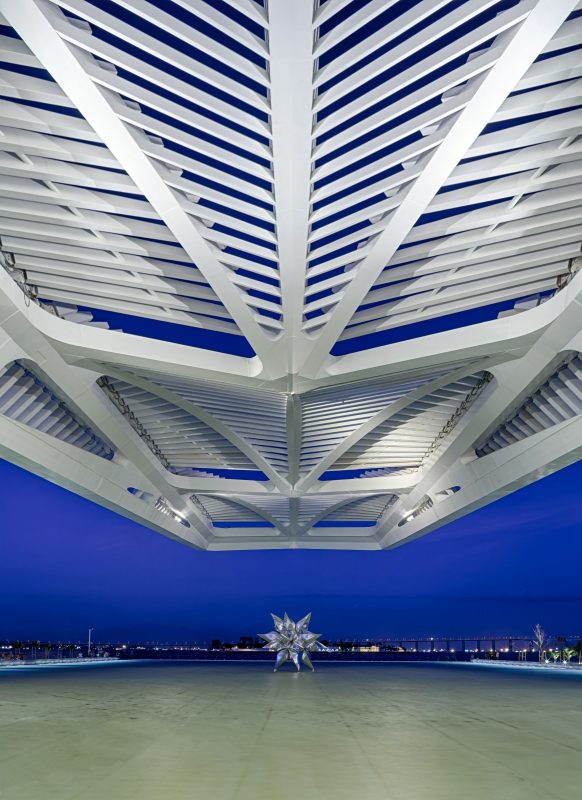
photography by © Gustavo Xavier
Located on the Maua Pier, the Museum of Tomorrow is part of a larger revitalization of Porto Maravilha, the port neighborhood in Rio de Janeiro. The project allows for better integration between the Port District and the city center and is helping to make this area one of the most attractive neighborhoods in the city. The building “is the result of a consistent dialogue. The building was built to be a museum for the future, and an educational unit,” said Mr. Calatrava.
The Museum of Tomorrow is made possible by the City of Rio de Janeiro and the Roberto Marinho Foundation, with the sponsorship of Banco Santander Brazil and the BG project. The project is supported by the Government of Brazil, through the Ministry of Environment and the Financier of Studies and Projects (FINEP).
The visionary museum is focused on answering five key questions: Where did we come from? Who are we? Where are we? Where are we going? And how do we want to live together over the next fifty years?
The Museum’s exhibits will address issues including population growth and increased life expectancy, consumption patterns, climate change, genetic engineering and bioethics, the distribution of wealth, technological advances and changes in biodiversity. The permanent exhibition is curated by physicist and cosmologist Luiz Alberto Oliveira and designed by Ralph Appelbaum, with the artistic direction of Andres Clerici.
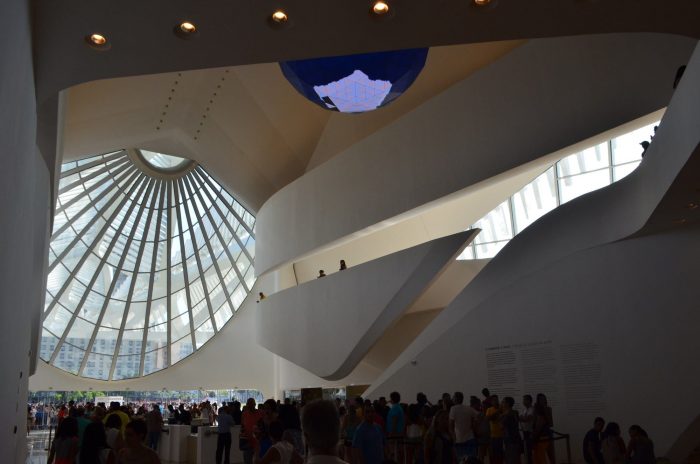
photography by © Amanda Marton Ramaciotti
Project Info:
Architects: Santiago Calatrava
Location: Rio de Janeiro, Brazil
Area: 15000 m²
Photographs: Gustavo Xavier , Amanda Marton Ramaciotti

